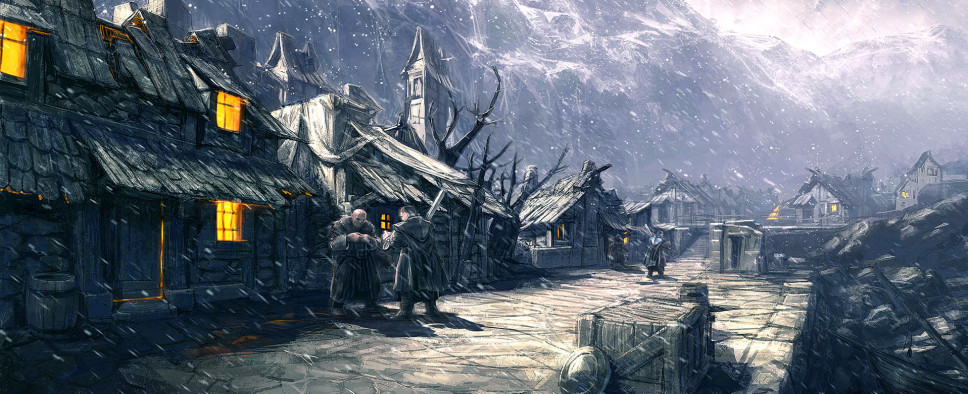Realms Beyond Blog Updates
-
Category: News ArchiveHits: 1560

The Bard’s Tale also had no map screen, so, like in the Wizardry games, you had to make your own maps if you didn’t want to get lost—or persuade someone else at school to let you copy his. A funny note: More than 30 years later, Brian Fargo’s inXile entertainment is creating the fourth part of The Bard’s Tale and the question of automapping pops up again.
What made the game stand out in our memory was the actual bard class in the game—the bard’s songs were essential to solving some of the puzzles in the game. And playing any song would actually play a little tune in the game. Most of the songs represented what we call buffs today, such as the one song that would reduce the armor class, and so forth. A small icon appeared next to the image of the person or the affected enemy as an indicator of the respective effect. It was pretty cool.
In addition to these songs, The Bard’s Tale also had an intriguing magic system that actually involved the player directly. Unlike in modern games where you simply select a spell without any actual intellectual input from the player, in The Bard’s Tale you had to enter a four-letter code combination to cast a spell. This meant you had to memorize the actual spell codes, such as D-E-S-T for the Death Strike. This was cool. It required the player to think and to get involved. Imagine playing easy-peasy Skyrim and you’d actually have to memorize and enter the shouts… I am telling you, once you had all the spells in the game safely stowed in your brain, you actually began to feel like a real wizard!
...
While we’re using assets and code from the never-released Chaos Chronicles project, we decided early on to create the actual content for Realms Beyond from scratch. But where do you start designing an open world roleplaying game?
Aside from re-familiarizing myself with the D&D rules of version 3.5 and looking through all the already-created assets and materials, I had a completely clean slate. Peter (aka HobGoblin42), our project director and lead programmer, had only one guideline for me: create a believable world, rich in detail, that appeals to fans of classic fantasy games and literature.
For a game designer and writer, that is a lot of leeway—much more than you will usually find. So I sat down and brainstormed a number of ideas. While being an open world, the game would ultimately have to have some kind of main storyline, regardless of the player’s participation in it. Some overarching events have to happen in the world to keep the whole thing moving. With that in mind, I fleshed out a first basic storyline.

